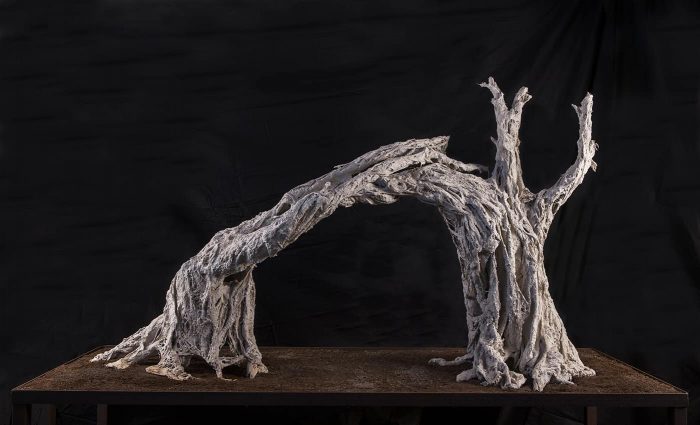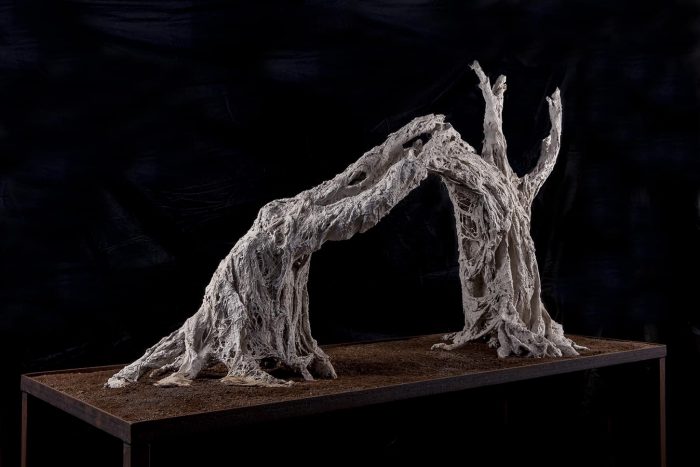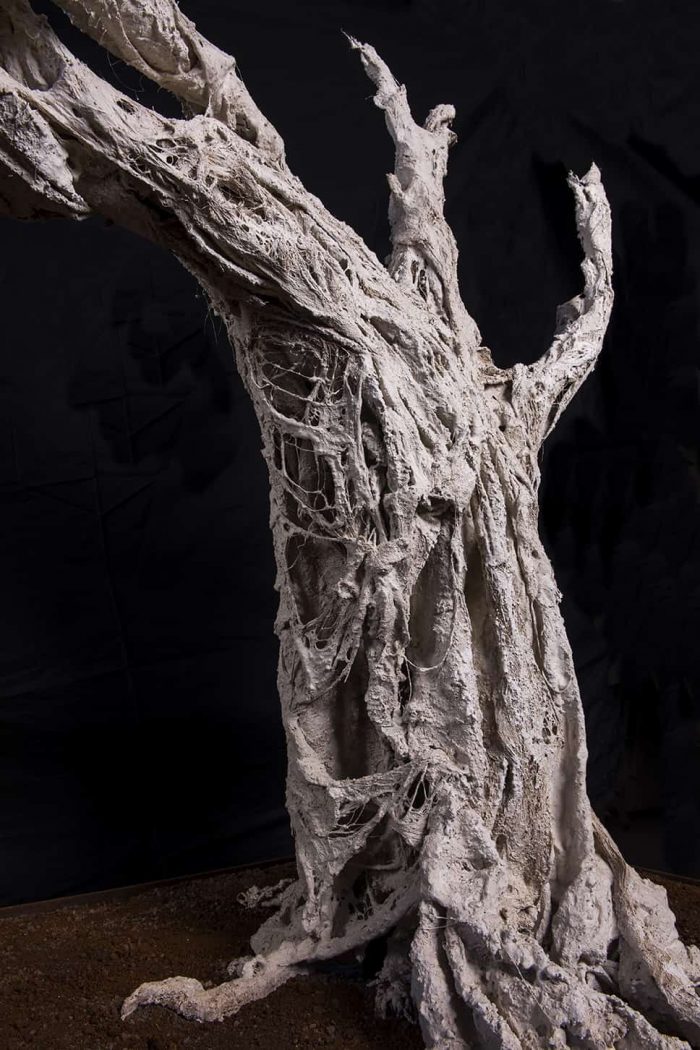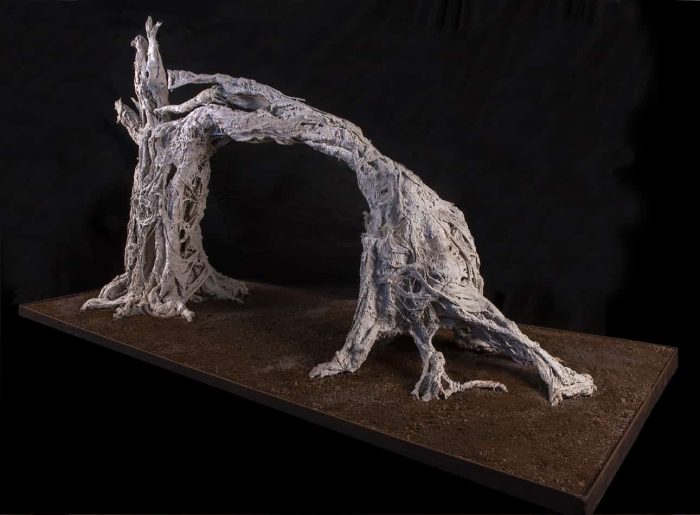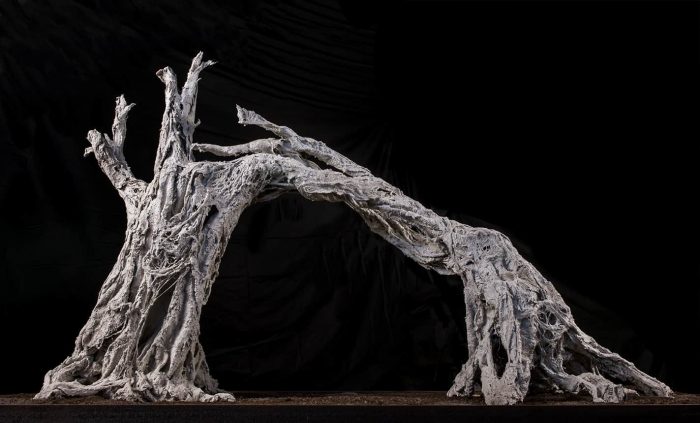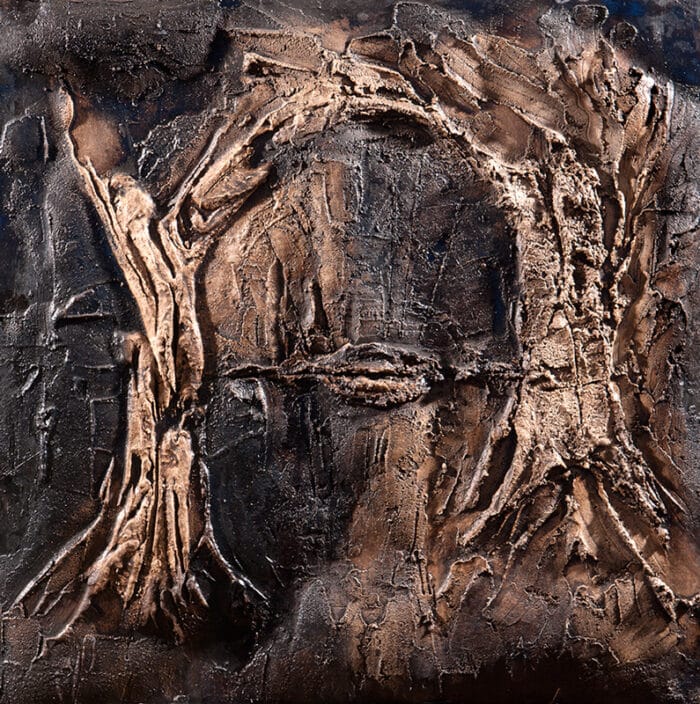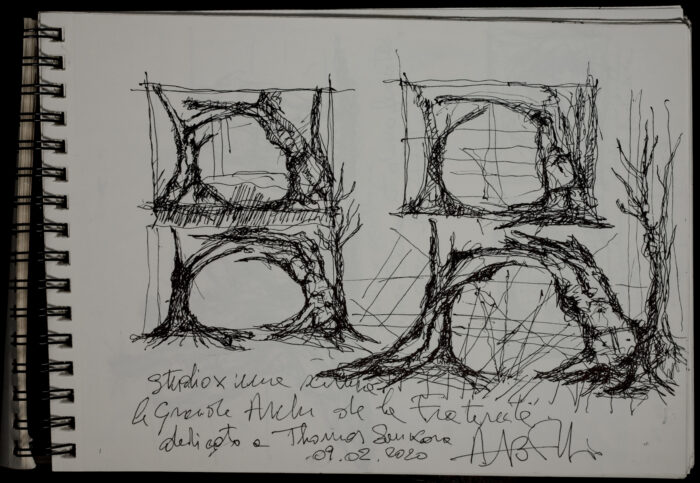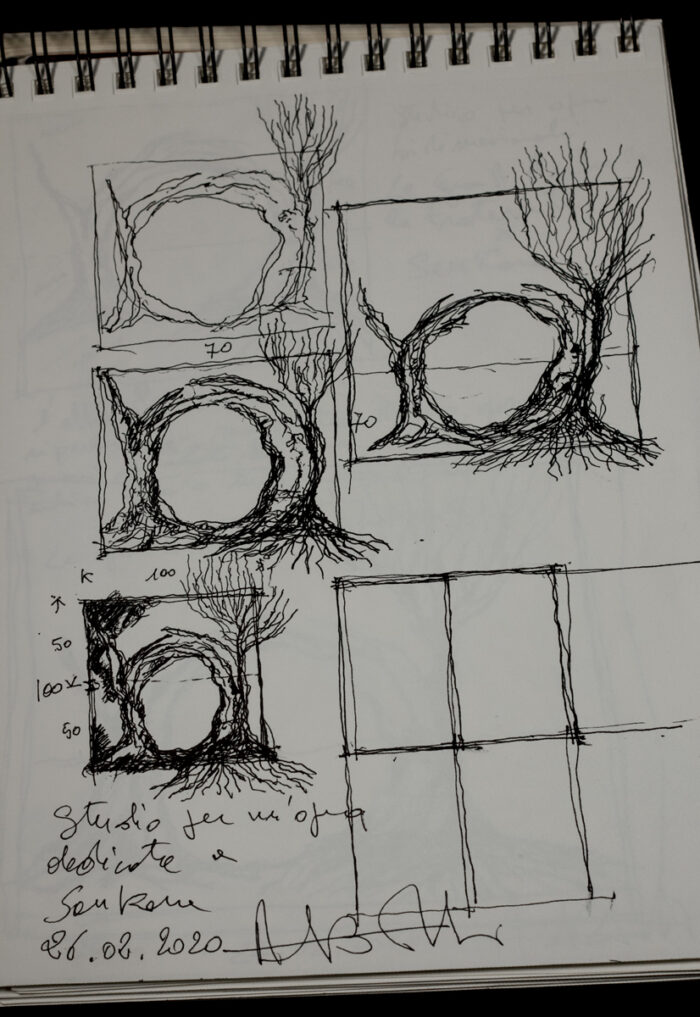
The Grand Arches of the Fraternité, dedicated to Thomas Sankara
It’s a tree that has almost been uprooted and dried up by the negligence of mankind and climate’s hostility. The tree bends, it pulls, it almost breaks as it tries to touch the floor with its branches and becomes, anthropomorphically, a body (like Sankara’s), supposedly lifeless. But from that body, from those branch-arms that pierce through the dry earth, like marcot, stems a new plant. A monument dedicated to an African man who indicated the direction of development, not only to his own people, but beyond. He was born in Upper Volta and died in Burkina Faso in an attack carried out by the Western authorities.
In 1983, the year in which Sankara became president, construction began in Paris for the “Grande Arche de la Fraternité”, a monument dedicated to humanitarian ideals which concluded with its inauguration in 1989, two years after the assassination of Sankara. The work is a controversial reflection on how the rich world, in particular the western world, perceives freedom, fraternity and equality among humankind. Today, the “Grande Arche de la Fraternité”, perhaps due to a subconscious sense of embarrassment, is known as the “Grande Arche de la Défense”, and it’s the largest business district in Europe. It connects the series “Saving Oneself from Shipwreck” and “What Remains of the Development”.


